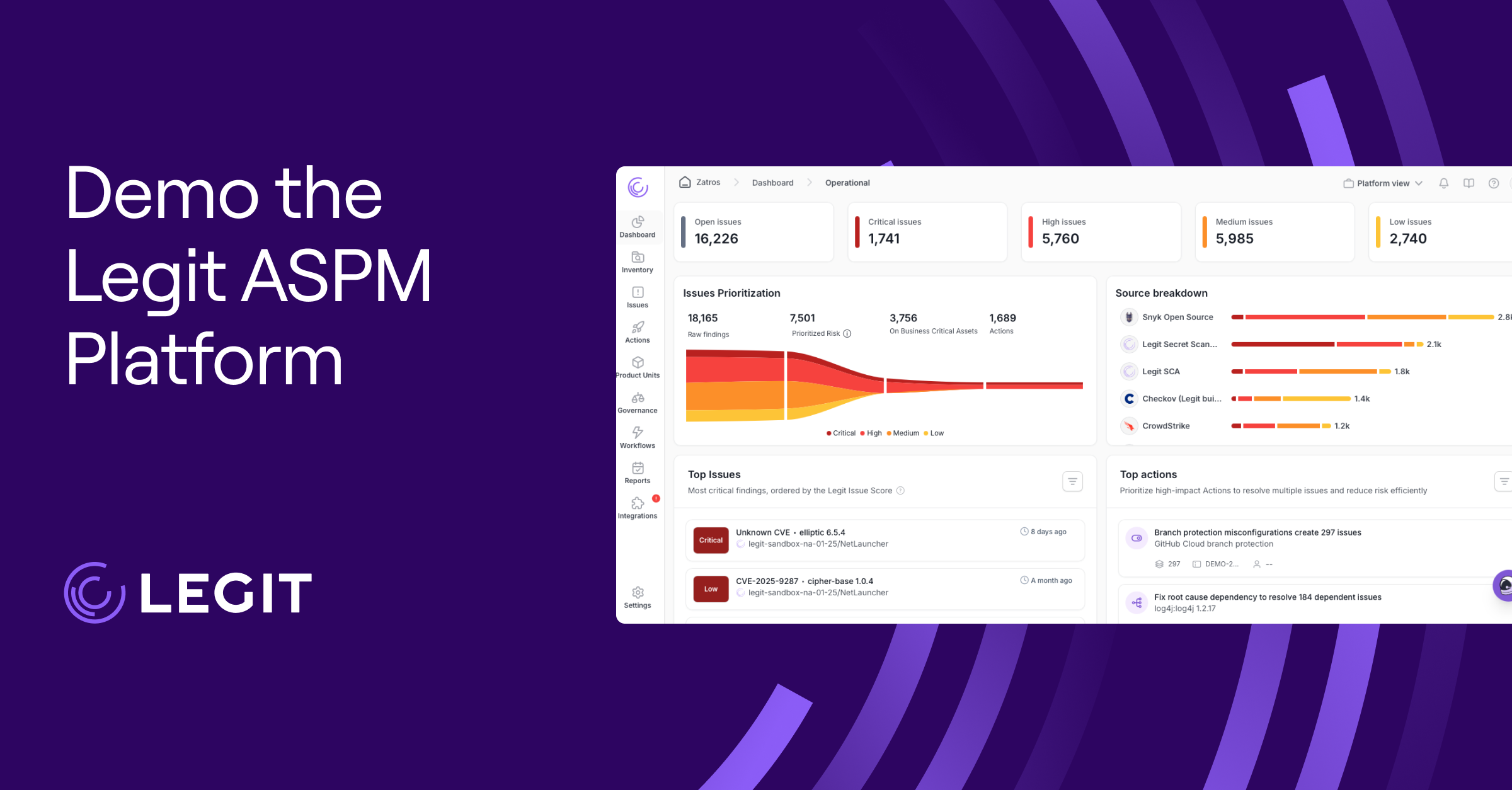Static Application Security Testing (SAST) and Dynamic Application Security Testing (DAST) spot application vulnerabilities at different development and deployment stages.
SAST and DAST are like a coach and a referee working together toward a player’s peak performance. SAST analyzes the player's form during practice, correcting errors before the game, while DAST observes the player in a live match, testing them under real-world conditions.
Combining SAST's internal, preemptive insights with DAST's external, real-world simulations gives organizations layered application security coverage and reduces the risk of attacks. Here’s how to use them both to secure applications, plus a guide to their differences.
What Is SAST in Cybersecurity?
SAST analyzes application code in its "static" state to identify security vulnerabilities in its source code, bytecode, or binary without executing the application. SAST helps developers pinpoint issues like insecure coding practices and input validation flaws early in the software development lifecycle (SDLC), reducing the cost and complexity of fixing them later.
The power of SAST is that it provides detailed insights into specific lines of code where vulnerabilities occur. This granularity speeds up the remediation process and serves as a learning opportunity for developers to improve their coding practices over time. By integrating SAST into continuous integration and continuous deployment (CI/CD) development environments, teams can continuously monitor for vulnerabilities as they code.
What Is DAST in Cybersecurity?
DAST assesses an application's security by testing it in a live, running state. It interacts with the application the way an attacker might—sending requests, manipulating inputs, and observing responses to uncover vulnerabilities. This makes it ideal for finding runtime issues that may not be visible in the code.
Organizations often integrate DAST into later stages of development or pre-deployment testing. Alongside other security measures, DAST helps make sure the application behaves securely under real-world conditions.
Why Are SAST and DAST Important?
SAST and DAST testing have complementary strengths, identifying vulnerabilities in both static code and live applications. SAST provides early-stage protection by analyzing source code for insecure practices before deployment, while DAST focuses on vulnerabilities that emerge when the application is running.
Together, these testing methodologies examine an application’s internal mechanics and external behaviors. They create a strong defense against a wide array of security threats, addressing risks that either method alone might miss.
What’s the Difference Between SAST and DAST?
The key differences between SAST and DAST are their different jobs within the development lifecycle and when they come into play. SAST first works on static code, analyzing the application's internal structure to find vulnerabilities without running it. DAST later tests the application in its running state, focusing on its behavior and interactions in real-world scenarios.
Another distinction is their perspective: SAST takes an insider view with access to the application’s code, while DAST takes an outsider perspective to simulate how an attacker would interact with the application. Combining these approaches offers a holistic security view, where SAST secures the application before deployment, and DAST confirms it remains secure when live.
When to Use SAST or DAST Scans
A business should use SAST during the early stages of development, ideally as part of the coding and building process. By integrating SAST into development workflows, developers can identify and fix vulnerabilities in the code before compiling or deploying the application.
DAST is best suited for the later stages of development, like functional testing or pre-deployment phases. It evaluates the application as it runs, uncovering vulnerabilities that arise from runtime environments, configurations, or user interactions. DAST is also valuable for ongoing security assessments in production because it mimics real-world attack scenarios.
Frequently Asked Questions
Is SAST Considered Black Box Testing?
No, SAST isn’t considered black box testing. SAST is a white box testing method because it requires access to the application's source code or binaries to analyze them for vulnerabilities.
Is OWASP SAST or DAST?
The Open Web Application Security Project (OWASP) provides resources and tools supporting both SAST and DAST. For example, OWASP Zed Attack Proxy (ZAP) is a popular DAST tool designed to help security professionals find vulnerabilities in active applications by simulating real-world attacks. The OWASP Software Assurance Maturity Model (SAMM) framework helps organizations integrate SAST into their SDLC.
Is DAST Only for Web Applications?
Although it’s often used for web apps, DAST works for any application that runs in a live environment.
How Is DAST Different From Vulnerability Scanning?
DAST and vulnerability scanning both look for weaknesses in an app but differ in scope and approach. Vulnerability scanning checks an application or its environment for known vulnerabilities, like outdated libraries, weak configurations, or unpatched software. This makes it more similar to SAST than DAST.
DAST doesn’t need to understand the underlying code. Instead, it tests how the application interacts with external inputs, user behavior, and third-party services. It looks for issues during runtime like authentication flaws or session management problems.
What Kinds of Vulnerabilities Can SAST Identify?
SAST analyzes source code, bytecode, or binary to identify vulnerabilities at an early stage of development. It uncovers flaws like:
- Insecure coding practices: These include using weak cryptography or hardcoding sensitive information such as passwords.
- Logic errors: Logic errors are problems in how the application processes data, which can lead to unexpected behavior or security vulnerabilities.
- Input validation flaws: Missing or incorrect user input validation could lead to SQL injection or buffer overflow attacks.
- Broken authentication and session management: These are the real-world issues that affect the authentication process, such as weak passwords, session fixation, or cookie vulnerabilities.
- Insecure direct object references (IDOR): IDOR allows attackers to access resources by manipulating input parameters. For example, an attacker could change a file path in a URL.
- Insecure communications: When data transmission has flaws, such as the use of unencrypted channels (HTTP instead of HTTPS), it’s known as insecure communication.
Integrate Security Testing With Legit Security
The Legit ASPM Platform acts as the foundation of your application security program, ensuring all your testing, including static analysis, is more effective and efficient. Legit discovers and visualizes all aspects of both applications and the software factory producing these assets, plus all security controls and gaps. Further, it consolidates security findings across all your scanners and tools (i.e., SCA, SAST, DAST, etc.), leveraging AI-driven correlation and risk scoring to fix your most critical issues first.
Request a demo today.
Download our new whitepaper.


